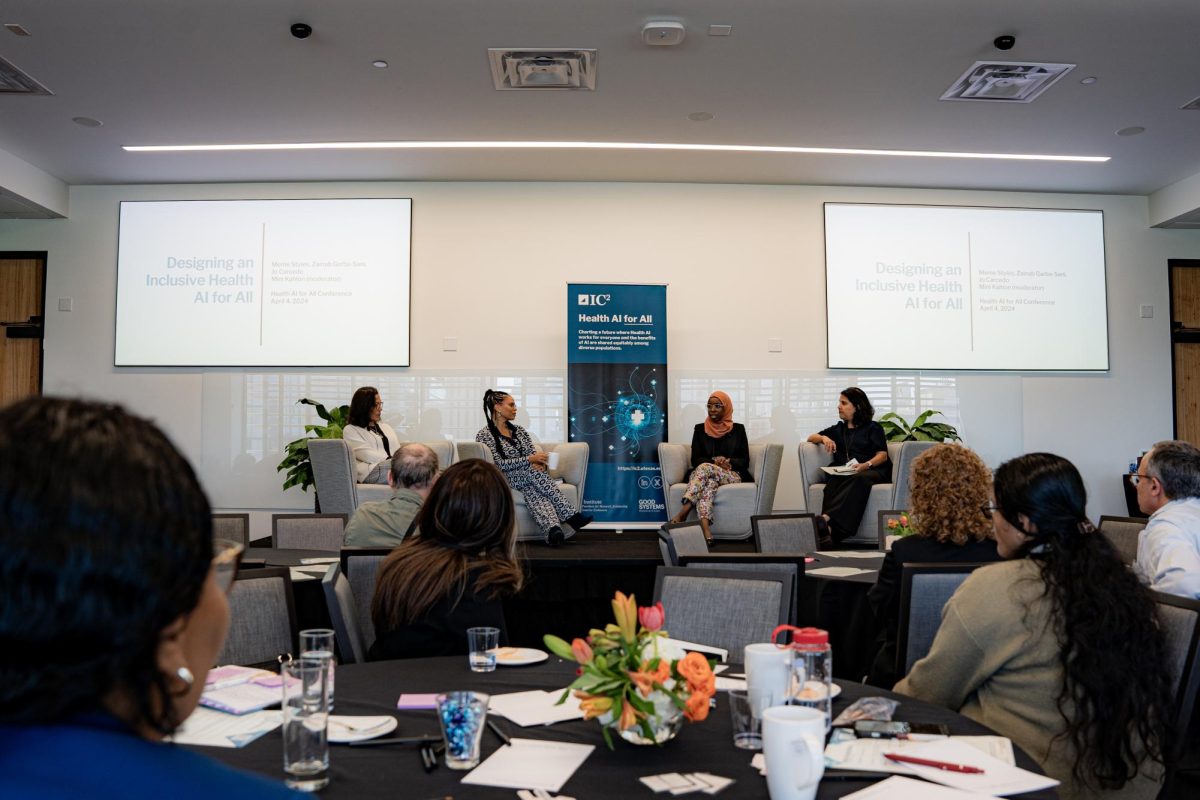The University’s race-conscious admissions process will enter the center of a national debate over affirmative action Wednesday as the Supreme Court prepares to hear the case Fisher v. Texas.
The court will hear oral arguments from the University and from attorneys representing Abigail Fisher, a white student who was denied admission to UT in 2008. Fisher sued UT claiming the University violated her right to equal protection under the 14th Amendment because the University included race as a factor in her application.
UT says race-conscious admissions are necessary to create meaningful diversity, but Fisher argues the University racially discriminated against her because its policies favor underrepresented groups. The court will rule on whether her claim is constitutional in 2013.
At UT only 25 percent of students are admitted under the same process as Fisher. Around 75 percent of students are admitted through the race-neutral Top Ten Percent Rule, which automatically admits high-ranking graduating seniors at Texas high schools.
It is likely the court will be reexamining the principle of using race to increase diversity, not just whether UT’s admissions policy is constitutional, said James Harrington, an adjunct constitutional law professor and director of the Texas Civil Rights Project.
Lower percentages of black and Hispanic students have been admitted through race-conscious admissions than through the Top Ten Percent Rule in every year since 2007, UT records show.
The key element of the decision will be if race can be used to “level the playing field of opportunity” to increase diversity in underrepresented groups, Harrington said.
“There is one view that says every individual must be treated equally, and there is another remedial view that says the purpose of equal protection is to allow people to be where they ought to be and level the playing field of opportunity,” Harrington said. “The current composition of the court sees the first view.”
Merits of Diversity
More than 70 organizations have filed briefs supporting UT’s admissions policy arguing that colleges have a compelling interest to use race-conscious admissions to create racial diversity.
When the U.S. Fifth Circuit Court of Appeals ruled race could not be used in admissions between 1996 and 2003, Hispanic and black student representation dropped, according to UT’s brief. The Supreme Court overturned this decision in the 2003 case Grutter v. Bollinger, and UT began using race in admissions again for applications in 2004.
A racially diverse education is necessary to prepare students for diverse work environments they encounter after graduation, said Melissa Hart, author of a brief filed on behalf of UT by the Council for Minority Affairs at Texas A&M University.
“Studies have shown that everyone, regardless of their race or gender, learns more effective critical thinking and leadership skills if they learn in a classroom that has a racial diversity of students,” Hart said.
Debo Adegbile, acting president of the NAACP Legal Defense and Educational Fund, said in a conference call last week that there is “overwhelming evidence” that affirmative action helps create a space where racial stereotypes are challenged.
Adegbile, a soccer player in college, related a personal story about his experiences with a teammate who called him a “fuzzy foreigner” after practice early during his freshman year.
“We didn’t have to end our relationship in the way that it began that day,” Adegbile said. “He began with a preconception and he was able to replace it by meeting a person with difference.”
“The Mismatch Effect”
Fisher’s attorneys argue race-conscious admissions discriminate against Asian and white students who do not face the same application standards as Hispanic or black students, violating the 14th Amendment’s requirement for equal protection.
Lino Graglia, a constitutional law professor, said race-conscious admissions harm black students because affirmative action policies allow them to enter schools where they are “typically less qualified” than other applicants and less likely to succeed.
“It seems to be pretty well understood today that the result of race preference in higher education is to hurt blacks,” Graglia said. “What you are doing here is taking black students out of schools they are fully qualified for and putting them in a more selective college where they are almost guaranteed to graduate in the bottom of their class.”
At UT, blacks and Hispanics have lower four-year graduation rates than whites and Asians, UT records show.
Graglia called this scenario the “mismatch effect.” Fisher’s supporters cite “the mismatch effect” in reference to the University of California, which eliminated race as an admissions factor in 1996.
While black enrollment of the University of California at Los Angeles declined from 5.4 percent to 3.2 percent of the student body between 1998 and 2005, the four-year graduation rate of black students increased from 29.2 percent to 48.3 percent between 1998 and 2005.
Graglia said the stated aim of increasing diversity did not increase meaningful racial understanding that benefited different groups on college campuses.
The Texas Association of Scholars, of which Graglia is a member, is one of 17 groups that filed briefs on behalf of Fisher. The authors argue there is no quantifiable evidence that racial diversity eliminates stereotypes. Instead, they say it increases the chance that students will be regarded as “tokens” of their race.
Law and government professor Lucas Powe said the removal of race-conscious admissions would impact campus diversity, but said other tools that converge with racial factors might achieve some diversity through other means.
“There’s nothing more effective in getting race than using race,” Powe said. “But if you can’t, just look at what you can do with using race neutral tools like the Top Ten Percent Rule. If you’re interested in economic diversity, just pick zip codes from the poorest part of the states and get students from there.”
Fisher has not challenged the constitutionality of affirmative action policies relating to gender or socioeconomic status.
Taking Action
Social work and Spanish junior Samantha Robles and history senior Joshua Tang have organized a student campaign called We Support UT to publicly defend UT’s
admissions policy.
The group organized a teach-in to educate students about the case and held a town hall forum with attorneys from civil rights groups siding with the University.
“It’s not just UT’s fault, it’s also the fault of K-12 not preparing students for college,” Tang said. “A lot of our black and brown children are falling through the cracks. We know the problem, and then we have cases like Fisher where the very little that is being done is threatened.”
If the University’s policy is rejected, UT will appear unwelcoming to groups that are already less likely to attend UT and application rates will drop, said Choquette Hamilton, associate director for development of African and African diaspora studies.
“The negative press certainly impacts application behavior,” Hamilton said. “The reason is perception of access. If students feel their admissions prospects are low, they are going to say ‘why should I waste my time and money to apply?’”
A ruling in Fisher’s favor would harm efforts to attract students to UT through programs like Advise Texas and University Outreach Centers, Robles said. UT should seek other ways to increase racial diversity regardless of the ruling in the Fisher case, she said.
Wednesday’s hearing marks the start of the last phase in a case that began in 2008. The court’s ruling, likely to come in the spring, will determine the future of UT admissions policy and could have implications for affirmative action policies across the country.



















